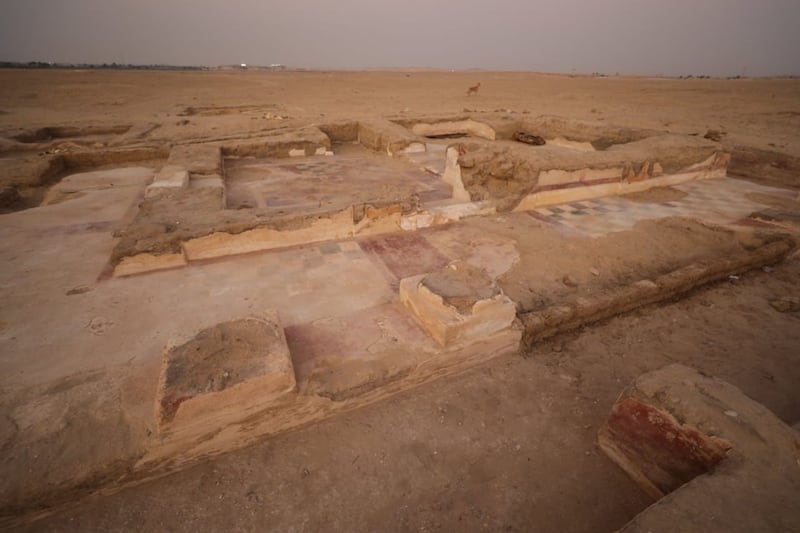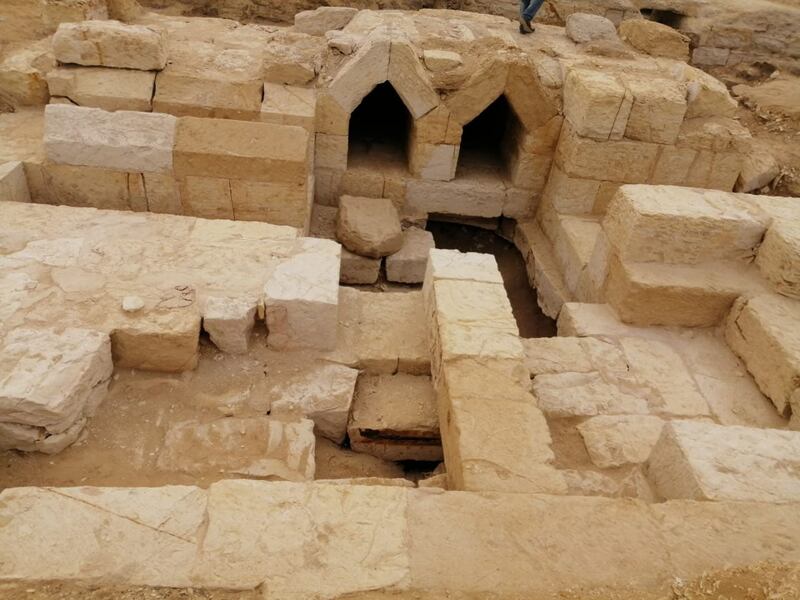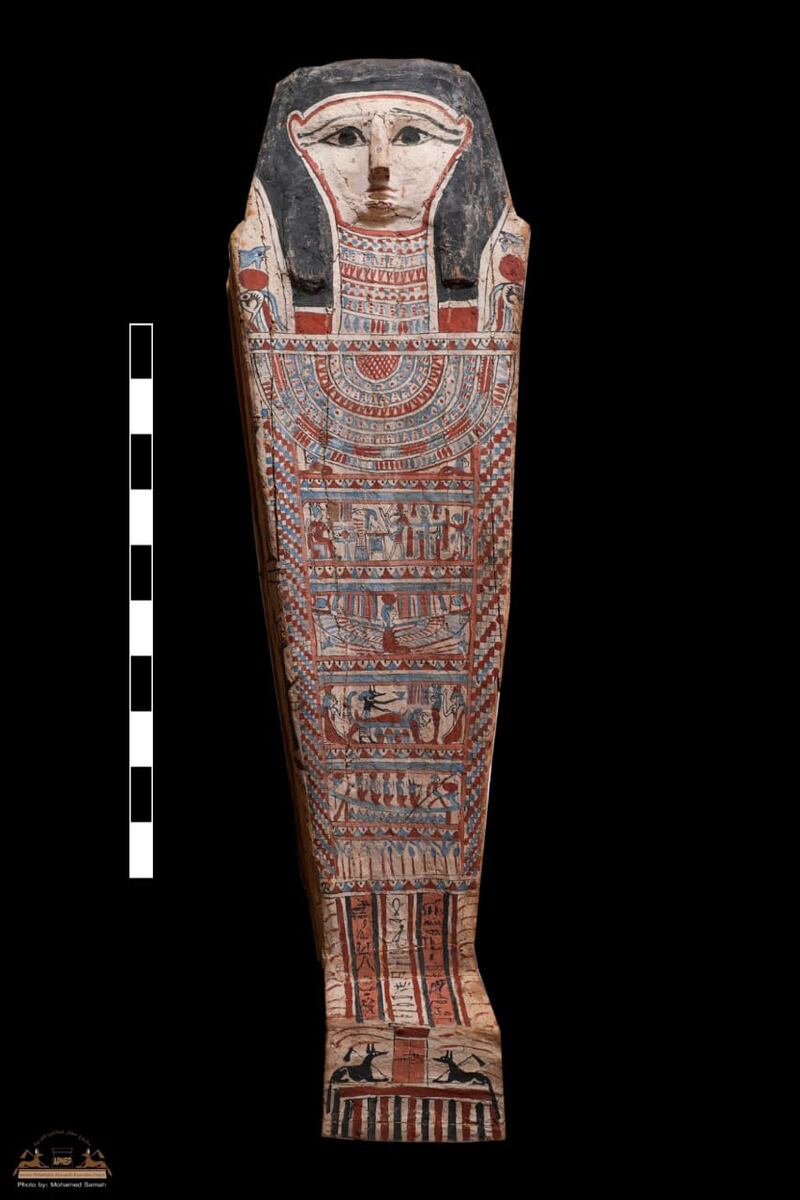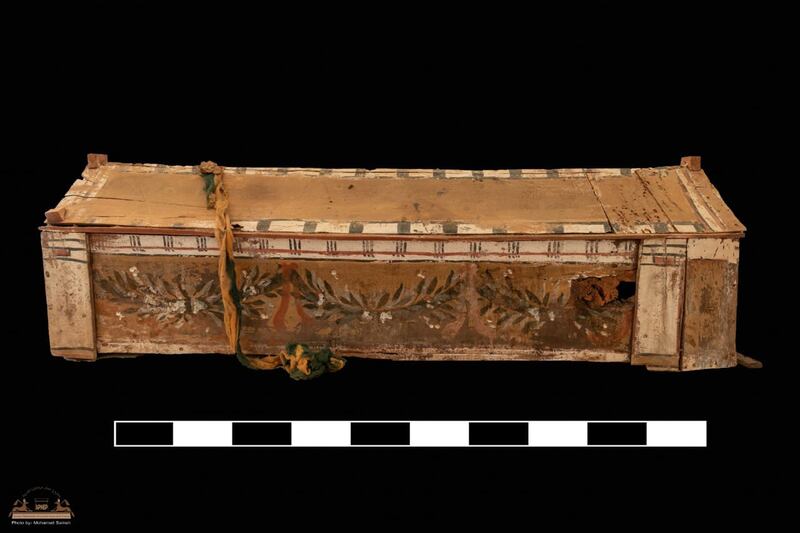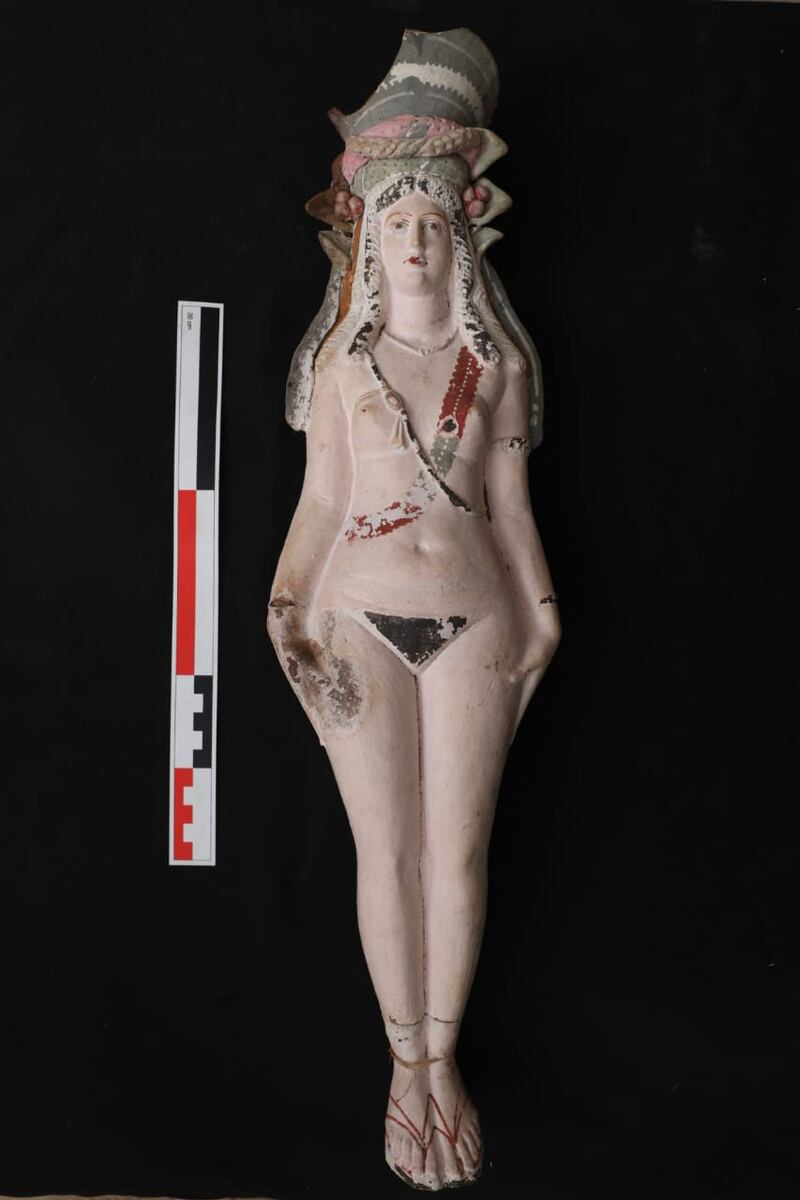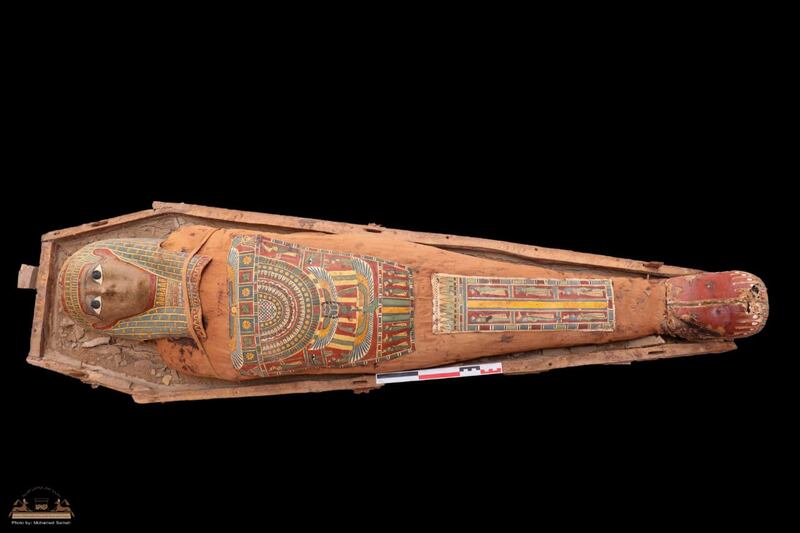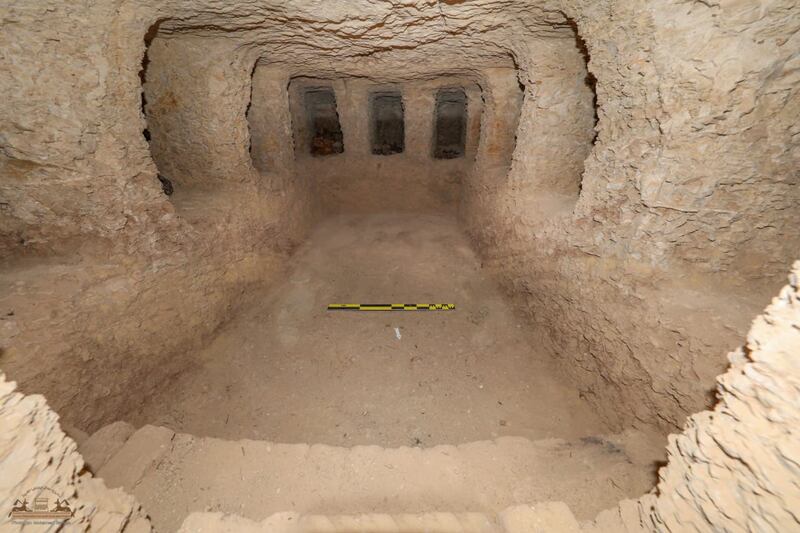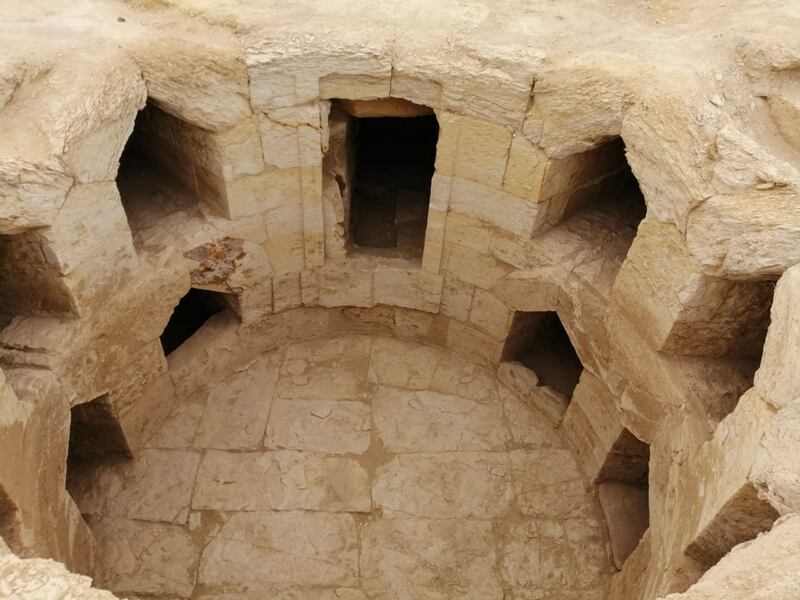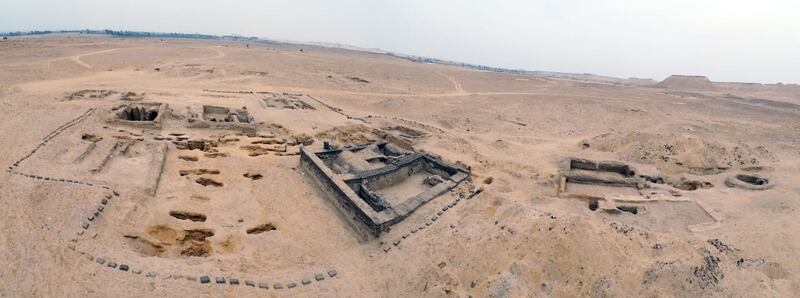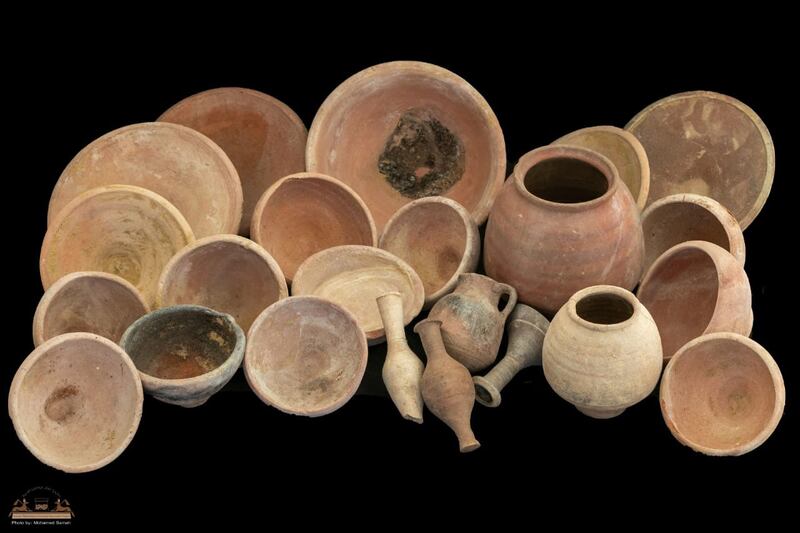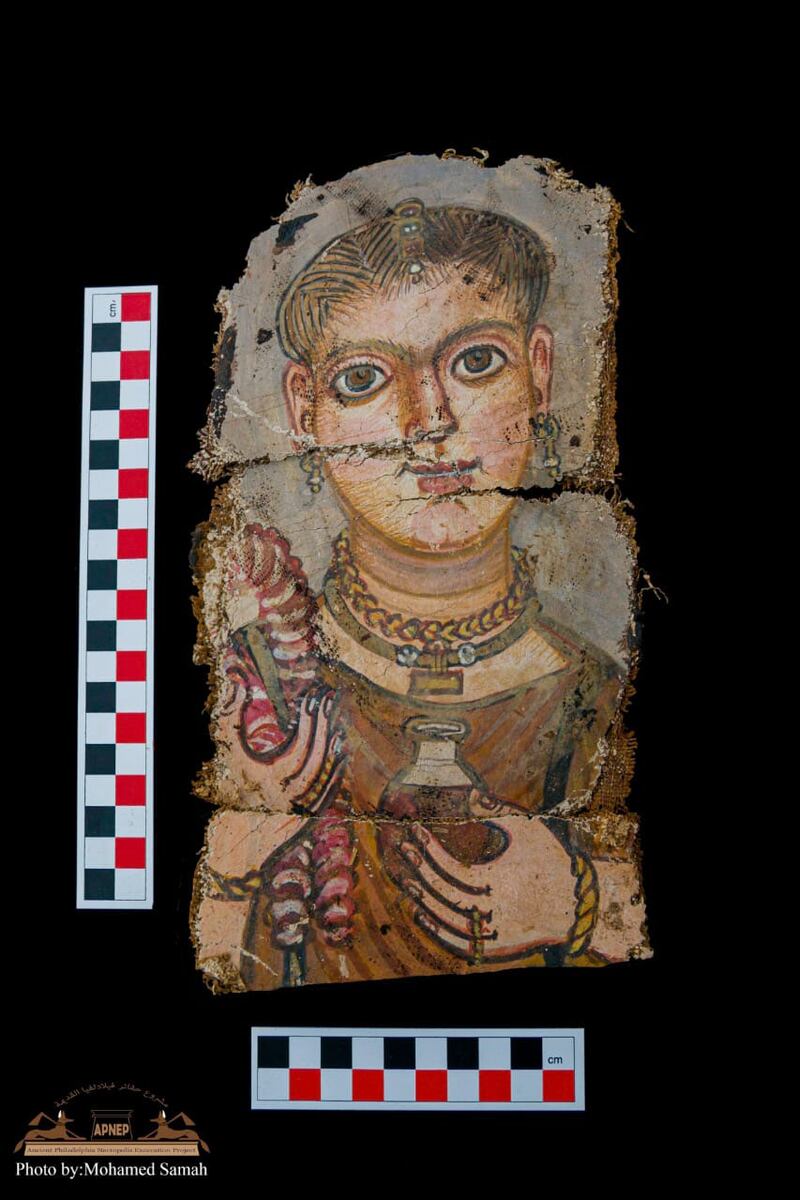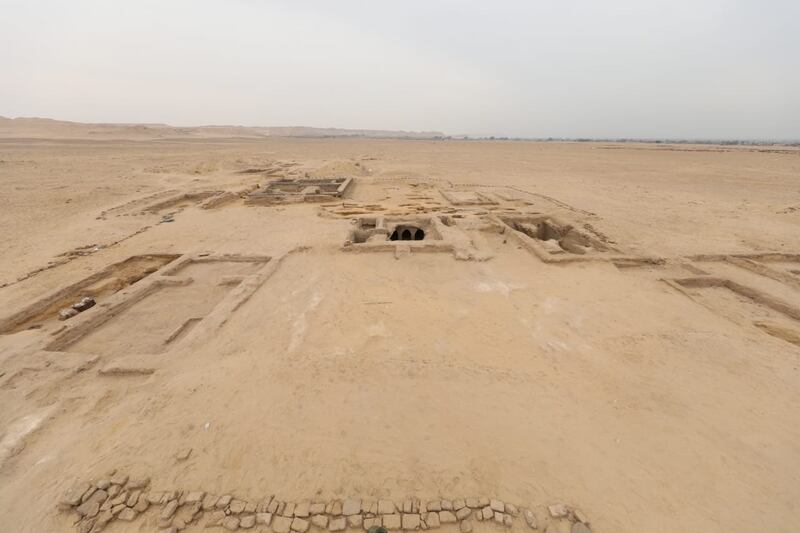An Egyptian archaeological mission working in Jirzah, a village south of Cairo, has unearthed a large funerary complex dating back to the Ptolemaic and Roman periods of ancient Egypt.
Egypt’s Supreme Council of Antiquities said a number of classical-era mummy portraits dating back to Roman rule of the country were the find's most exciting items.
The Fayum portraits, a kind of mummy portrait that became a funerary custom popular among Egypt’s upper classes during the Ptolemaic and Roman periods, are the first to be discovered since the original batch was unearthed by English archaeologist Flinders Petrie more than 115 years ago.
A terracotta statue of Isis-Aphrodite — a combination of the Egyptian deity Isis and her Greco-Roman counterpart Aphrodite, also known as Venus — was found inside a wooden sarcophagus, the council said.
A number of papyrus records were unearthed, inscribed with demotic and Greek scripts, detailing the social, religious and economic conditions of the area’s residents.
A number of clay vessels and jars were also found.
Antiquities official Adel Okasha said the funerary complex’s floor was made of limestone and decorated with coloured tiles.
To the south of the complex, the ruins of a colonnaded hall were unearthed, with the remains of four fallen pillars found within.
Several sarcophagi were also discovered, with some in human shape, a style derived from ancient Egypt, and others designed in the Greek style, with a gable-roof style, the council said.
The village of Jirzah, which was known as Philadelphia during the Roman era, was established in the third century BC as a central part of an agricultural reclamation project introduced by King Ptolemy II at the time.
It was inhabited by Egyptian and Greek citizens.
Since the mission broke ground on its excavations in the area in 2016, it has also unearthed six burial sites that were fashioned in the Greek catacomb style, an attestation to how deeply ingrained Greco architecture had become in Egypt at the time.
